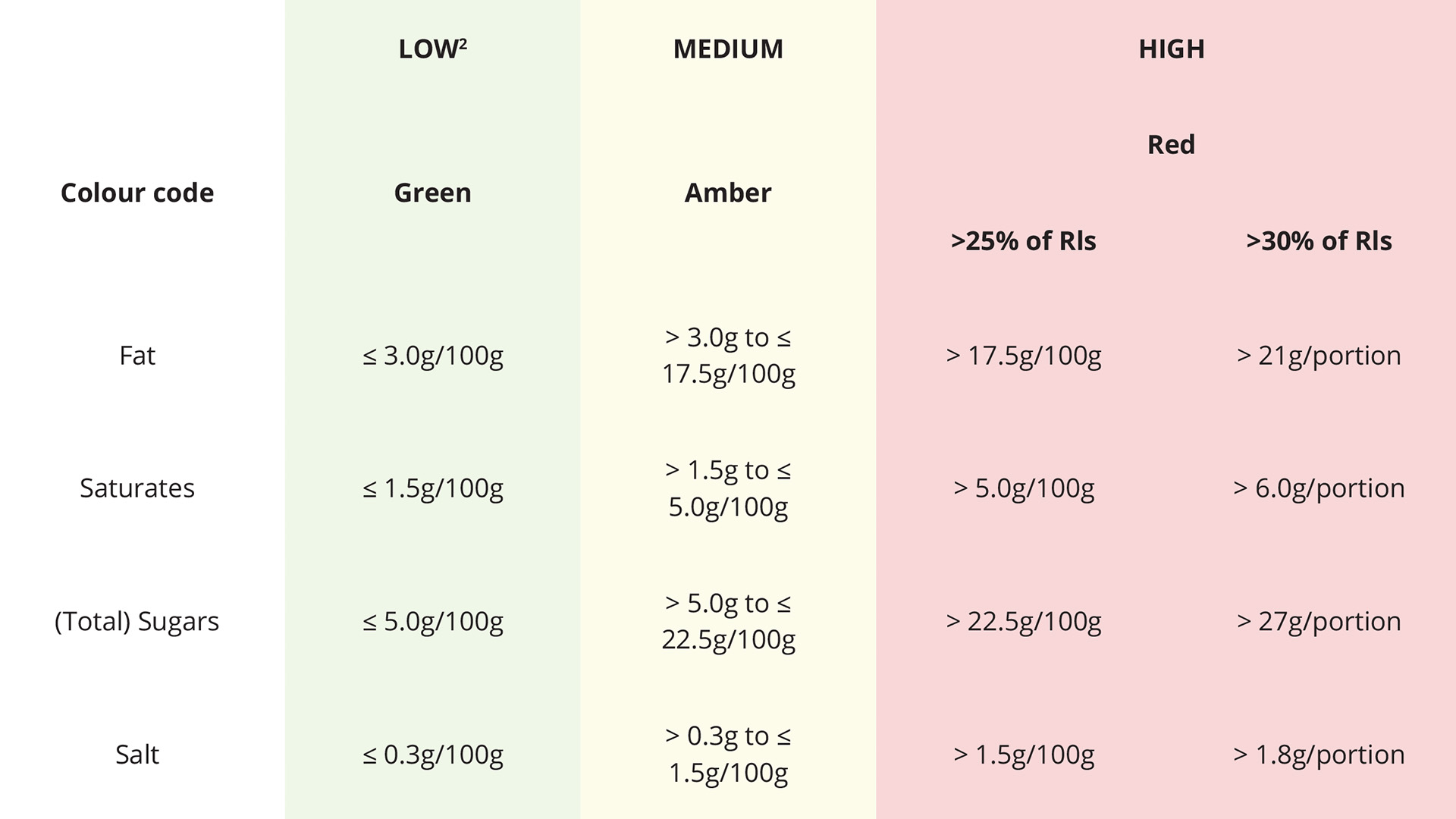How to read a food label
Reviewed by Dr Mitra Dutt
When out food shopping, understanding labels and packaging can be difficult. Plenty of pre-packaged foods claim to contain ‘healthy’ food, but these claims can be misleading. It's best to use the labels.
This article will provide information on food labels in the UK, and how we can use them to make informed dietary decisions.
What is a food label?
Sometimes called a nutrition label, food labels provide people with information on the contents of pre-packaged foods. They help us understand what’s in our food and make healthier choices.
Back and side of pack labelling
Labels on the back or side of packaging must include information on:
- The number of calories or ‘energy’ - having the calorie content can help us stick to recommended daily intakes
- Fat and saturated fat
- Carbohydrates
- Sugars
- Protein
- Salt
The above information is provided per 100g or per 100ml, and sometimes it’s provided per portion. You may also see additional information on things like vitamins and minerals. To get the most out of these labels, it helps to know the guidelines for if a food is high or low in fat, saturated fat, salt, and sugar. The NHS guidelines are:
Total fat:
- High: more than 17.5g per 100g
- Medium: more than 3g to less than or equal to 17.5g per 100g
- Low: 3g or less per 100g
If you’re trying to cut down on fat, avoid foods with more than 17.5g per 100g.
Saturated fat:
- High: more than 5g per 100g
- Medium: more than 1.5g to 5g or less per 100g
- Low: 1.5g or less per 100g
When avoiding saturated fat, cut back on foods with more than 5g of saturated fat per 100g.
Sugars:
- High: more than 22.5g per 100g
- Medium: more than 5g to 22.5g or less per 100g
- Low: 5g or less per 100mg
If you’re trying to reduce your sugar intake, look for foods with less than 22.5g per 100g.
Salt:
- High: more than 1.5g per 100g (0.6g of sodium)
- Medium: more than 0.3g to 1.5g or less per 100g
- Low: 0.3g of salt or less per 100g (0.1g of sodium)
If you’re watching your salt intake, look for foods with 0.1g of sodium or less per 100g. Find healthy salt alternatives in our guide.
It can be difficult to work out how nutritious or calorie dense pre-packaged food is by using these labels. This is because it’s hard to visualise portion sizes and remember the recommended grams per day, per nutrient. Front of pack labelling can be easier to use.
Front of pack labelling
Front of pack labelling is sometimes called traffic light labelling. In the UK, providing this information on packaging is not a legal requirement, but most supermarkets and many manufacturers include it. This type of labelling provides a colour-coded view of the following nutrients in food: fat, saturated fat, salts, and sugars.
- Green: the product is lower in the nutrient and is usually a healthier choice
- Amber: the product is not high or low in the nutrient
- Red: the product is high in the nutrient – food with nutrients in the red should be eaten in moderation
When comparing products, it’s usually best to aim for greens and ambers, and fewer reds.
On the same label, you’ll usually see the calories per portion of the product in the “Energy” column. Under the calories, the percentage of calories provided per the reference intake is also provided. You can also find this per nutrient. For example, if the label says 4% under the fat column, this means that the recommended portion of the product contains 4% of your daily recommended fat allowance.

The reference intake is 2,000 calories and is based on an averaged sized woman doing an average amount of activity. Each person’s recommended calorie intake will be different, but the reference intake provides a good starting point for most people.
What about fibre?
You may have noticed that there isn’t a RI for fibre. This doesn’t mean it isn’t important – most people in the UK need to eat more fibre – 30g each day to be exact! Fibre can still be included in nutrition labels on the back of packs, and you may see labels like ‘source of fibre’ or ‘high in fibre’ on foods that provide significant amounts.
Allergens
The 14 most common allergens must be clearly visible on pre-packaged foods. These are usually put in bold text, but sometimes, italics, capital letters, or underlining are used. You should also see "For allergens, see ingredients in bold” or something similar.
Some products will also contain something like “May contain nuts or seeds.” This is because some traces of nuts or seeds may have been picked up during the manufacturing process, even though they are not an ingredient.
Healthy lifestyle advice at LloydsPharmacy Online Doctor
We’re here for you with advice articles from our NHS-experienced clinicians. We cover everything from stopping smoking to losing weight and getting started with exercise.
References
https://www.food.gov.uk/business-guidance/allergen-guidance-for-food-businesses
https://www.nhs.uk/live-well/eat-well/food-guidelines-and-food-labels/how-to-read-food-labels/
https://www.nutrition.org.uk/putting-it-into-practice/food-labelling/looking-at-labels/





